
Graffiti by Paul Box at Upfest, Europe's largest street art and graffiti festival.
With a population of less than half a million, Bristol is only the 10th largest city in the UK. Even so, he has always aimed very high. A twelfth-century writer described it as “almost the richest city in the whole country, Obtaining merchandise from sailing ships from lands near and far.
Six hundred years later, at the height of his fame, Bristol was the focus of the so-called 'triangular trade', in which slaves were bought for English trinkets on the West African coast and traded for tobacco, chocolate, and sugar in the East Indies. (Slavery and the enormous fortunes accumulated thanks to it remain the most shameful secrets in its history).
Ask one of the city's residents what they know about Bristol and they'll tell you about the region's unique accent, which emphasizes the 'r' sound, as well as the hilarious way in which Bristolians address each other as “my loverrrr” (my lover) when they greet each other.
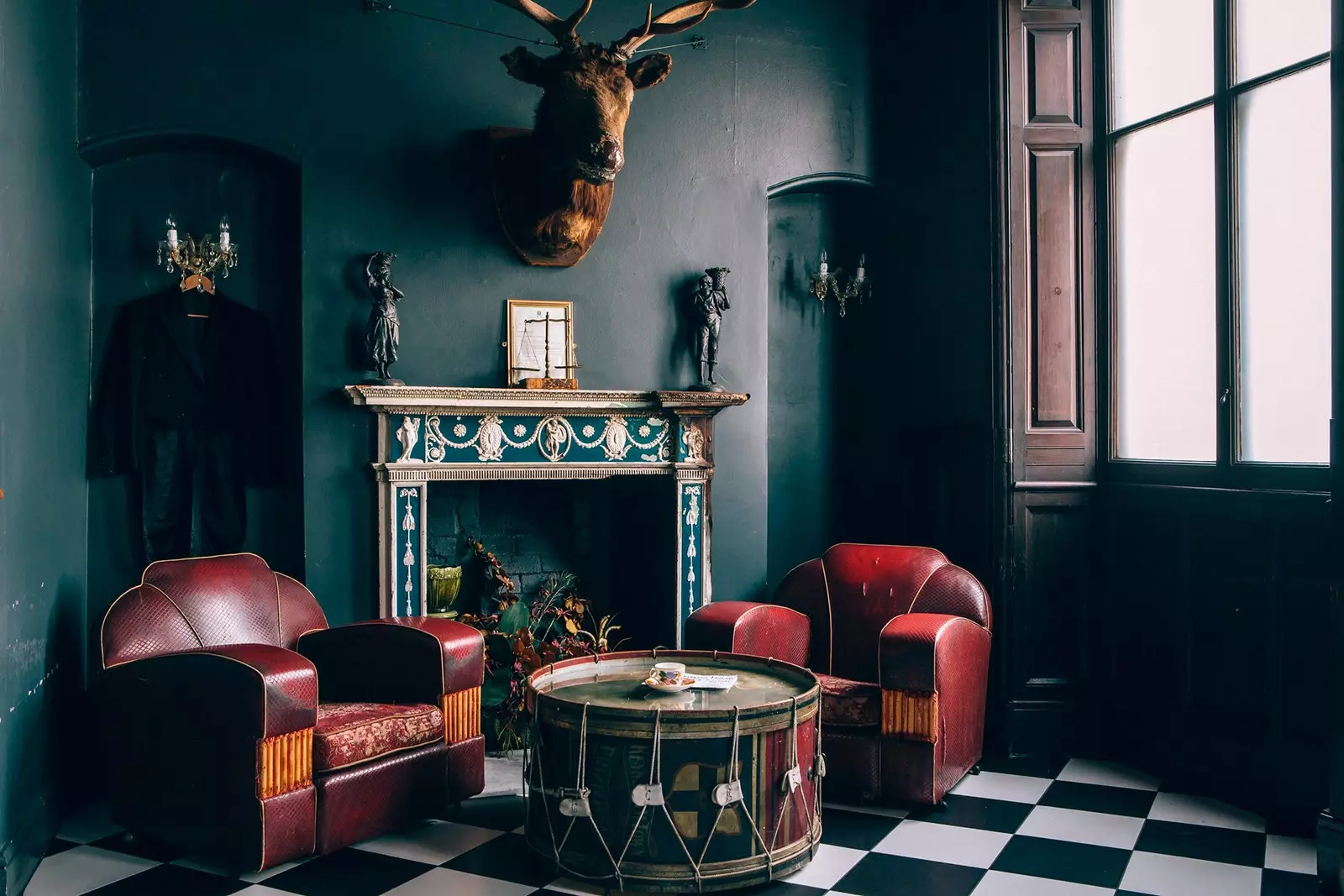
Cocktails with a clandestine vocation at The Milk Thistle.
They may also mention famous people such as the architect, civil engineer, bridge builder and absolute genius Isambard Kingdom Brunel (1806-1859) ; Cary Grant (born and bred Archibald Leach) or **Banksy, the international street artist and mystery man.** And if they're up to date musically, they might recommend the moody, brooding 'Bristol sound', better known as trip-hop and famous in the nineties thanks to artists like Massive Attack, Portishead and Tricky.
However, the truly informed expert will tell you that in these years **Bristol has made great strides to overtake Manchester, Brighton and Glasgow ** - not to mention its elegant neighbor and eternal rival Bath -, becoming the hot spot and of the moment. Today, the city has a vibrant cultural agenda, an energetic and cutting-edge food scene, and a (relatively affordable) quality of life that recently led the Sunday Times to declare it "The best place to live in England."
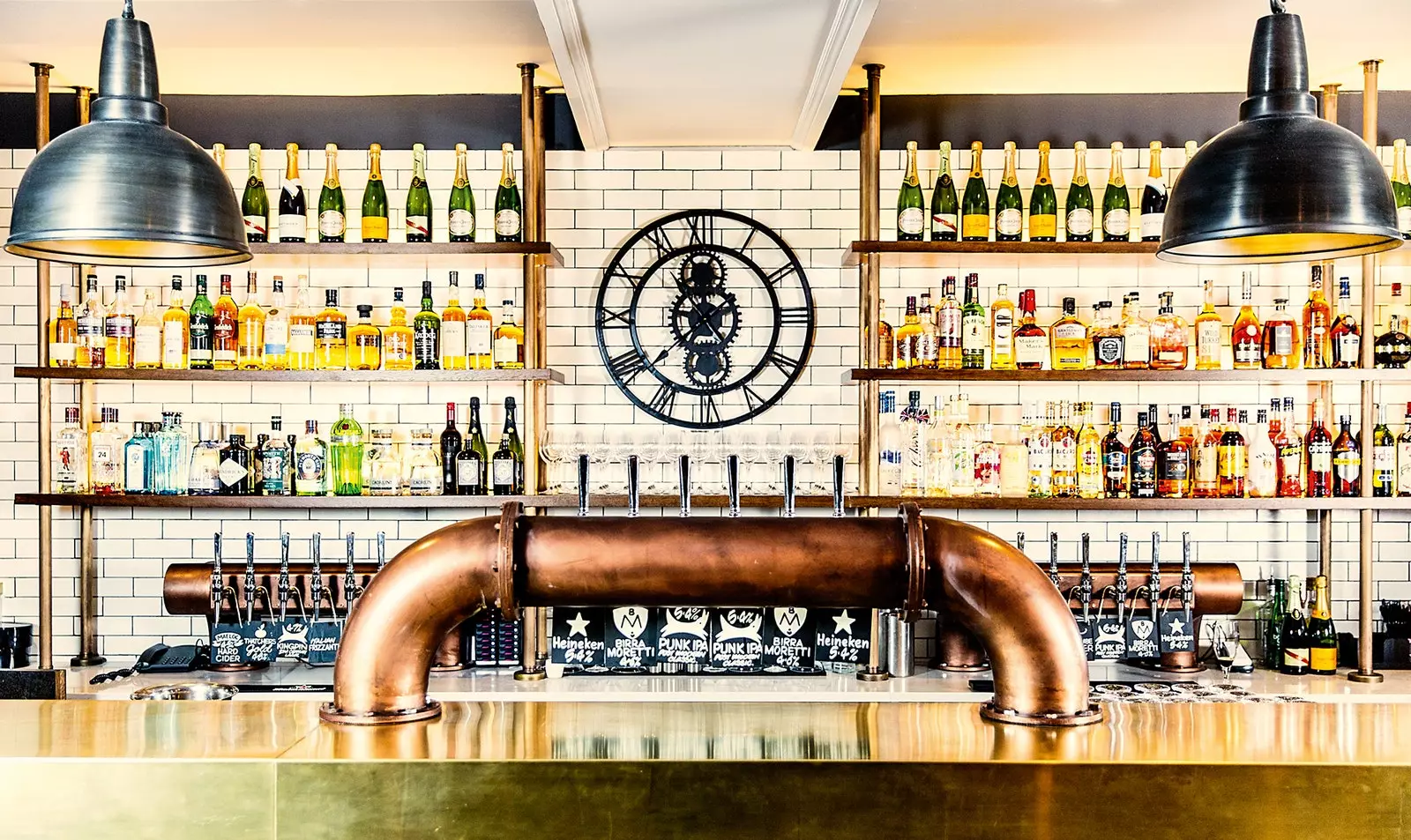
White Lion Bar, at the Avon Gorge by Hotel du Vin.
FOR VISITS
Meanwhile, to the surprise of the locals, Bristol has once again become an international destination. Foreign tourism has been growing from year to year, with an increase of 52% since 2010. Flights arrive from Amsterdam and Bordeaux, Warsaw and Zakynthos.
Bristol never had an interesting proposal in hotel terms, but now has a portfolio of properties with character whose buildings are connected, in different ways, to its prosperous past.
The eclectic and luxurious Harbor Hotel occupies what was once two palatial halls of a bank along Corn Street, whose sumptuous Neoclassical and Neo-Byzantine interiors bore witness to the waves of money that once poured into Bristol.
The Hotel Du Vin, one of the most successful English chains when it comes to wine-related hotels, opened in 1999 in a renovated warehouse where, due to a historical irony, boxes of Sherry and Bordeaux were kept.
Number 38 Clifton is another building with a new purpose, in this case, that of an elegant Georgian townhouse with only 11 luxury rooms.
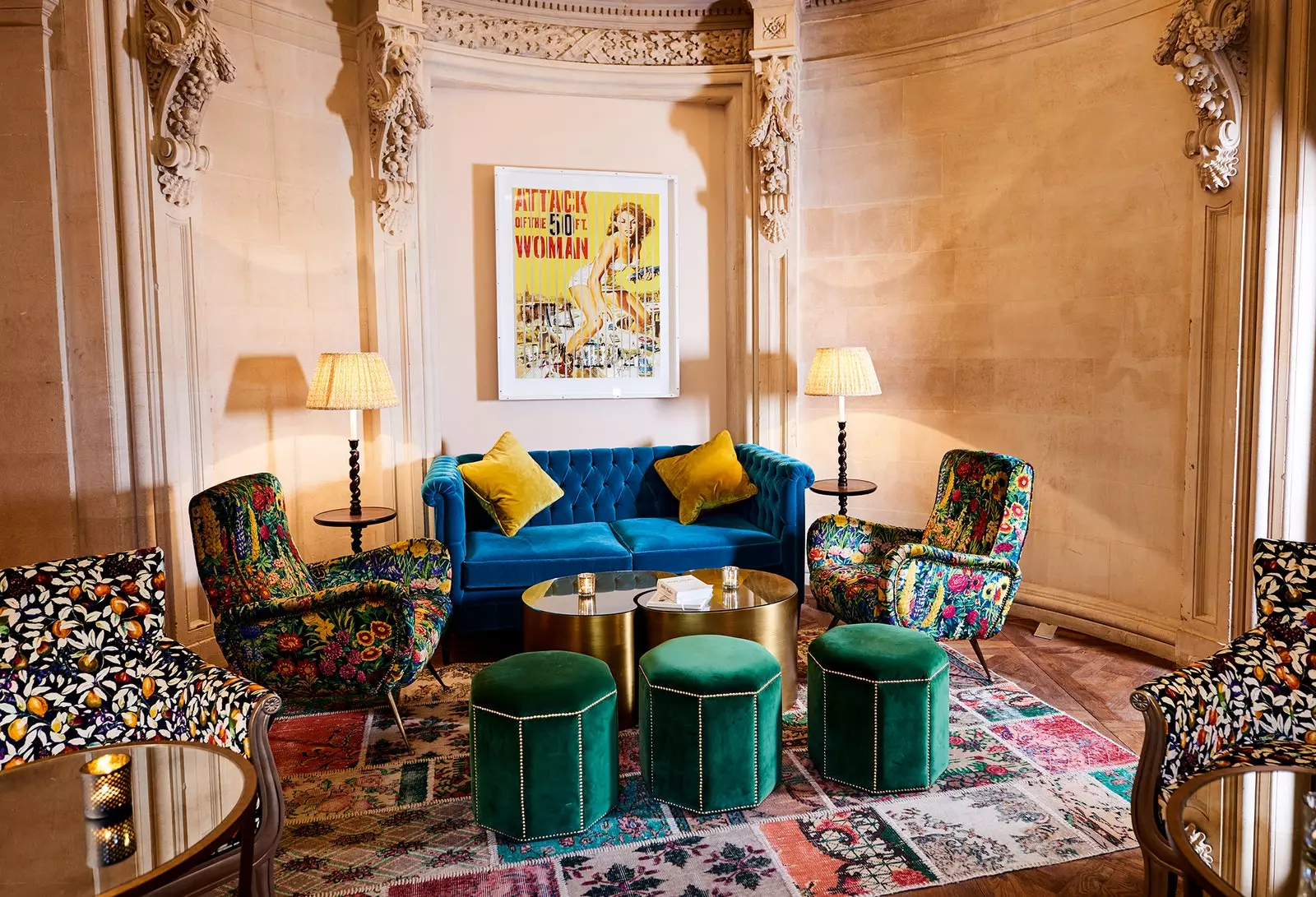
Gold Bar at the Bristol Harbor Hotel & Spa.
WHAT TO DO AND WHAT TO SEE
bristol is the de facto capital of the West Country of England, threaded along one of the branches of the River Avon, which flows west to the Bristol Canal. The port, once one of the busiest in the world, was the source of the enormous economic slap in the face that lasted from the medieval era to the mid-20th century.
Queen Square, a London-style square with a vast park in the middle, was once one of Bristol's most elegant addresses, until it was destroyed by the deadly combination of World War II bombs and post-war urban planning. war. Today, Bristolians eat lunch here on the manicured lawn or take a nap in the shade of the trees.
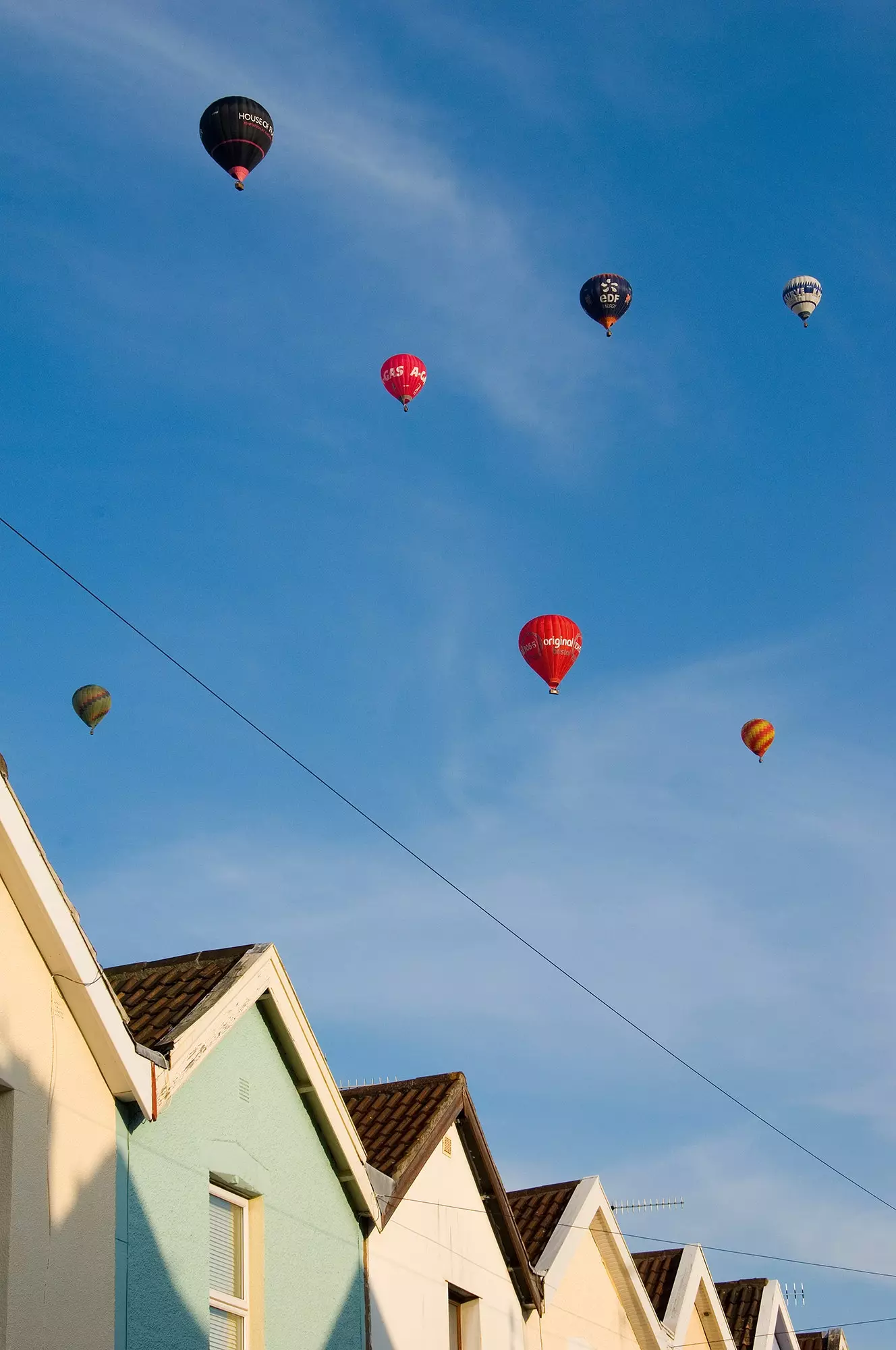
It looks like a scene from Up... but it's Bristol.
Further south is the Theater Royal, on King Street, built in 1766, the oldest (and in operation) in England. This year, the Old Vic reopens after a £25m renovation, bringing its 18th-century interiors back to their original glory.
Still, **there's nowhere else to feel the city's heritage like aboard the SS Great Britain,** designed in 1843 by Isambard Kingdom Brunel and preserved at a dock on Spike Island. With its 1,000 horsepower engine and propeller drive technology, this mighty ship was described by a contemporary source with a touch of hyperbole as "the greatest experiment since Creation." Magnificently restored, the ship is now part of a permanent exhibition that has become, in just a few years, the most visited attraction.
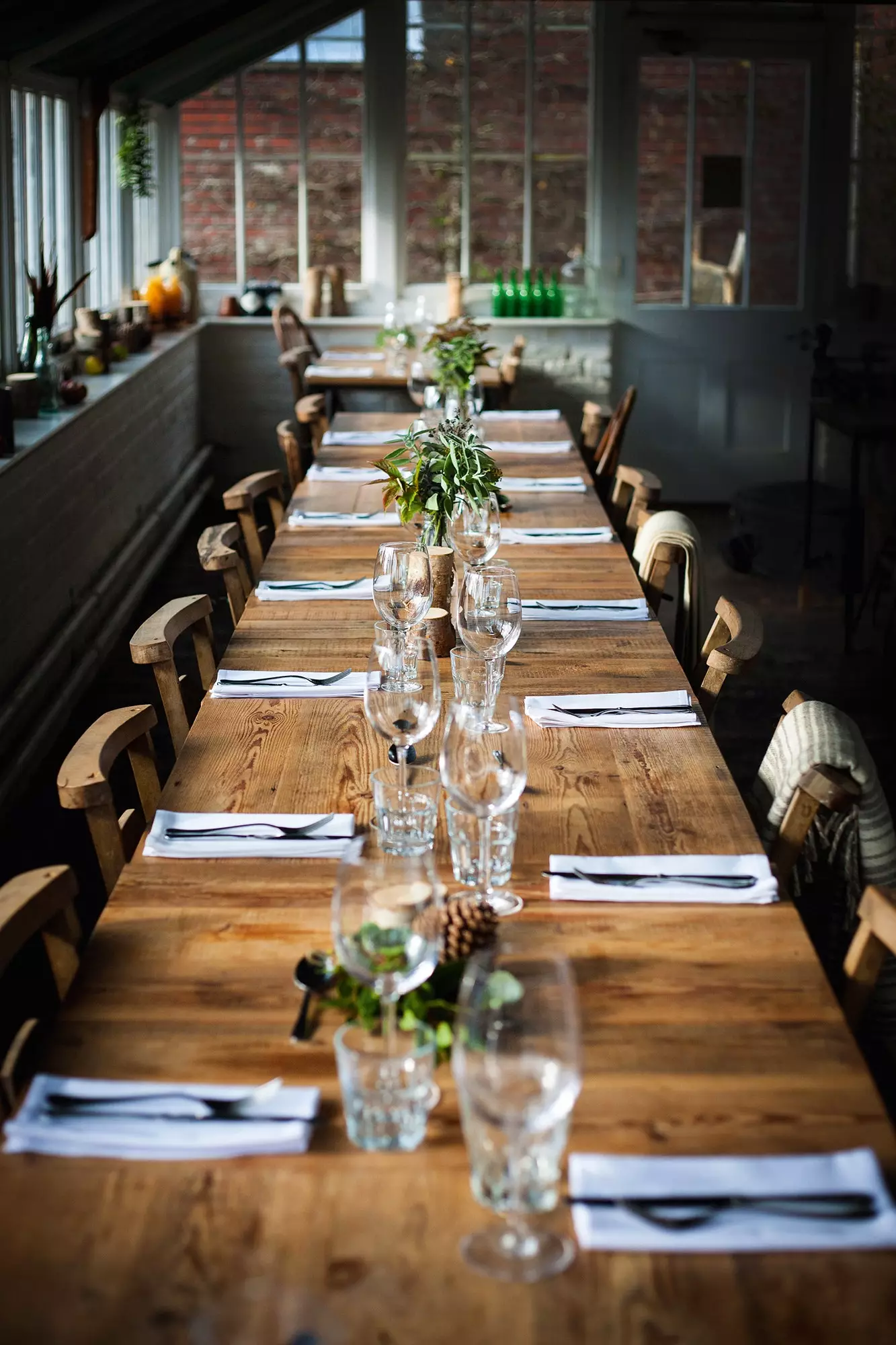
The Ethicurean is more than a restaurant, it is the project of brothers Matthew and Ian Pennington of local cuisine.
Viewed from the docks of the Great Britain, the port breathes new life with old factories converted into "prestigious waterside developments". A blue and yellow ferry runs up and down the canal, allowing you to enjoy emblematic views such as those of the Matthew , a 1497 ship in which John Cabot (born in Genoa, but an eminent and honorable Bristolian) crossed the Atlantic to discover Newfoundland; and **M Shed , a store dedicated to the many facets of Bristol's culture,** such as its extraordinary music scene.
Writer Richard Jones, author of Bristol Music: Seven Decades of Sound and curator of a recent exhibition at the M Shed, traces the musical personality of the city as a mixture of Afro-Caribbean influences brought here by immigration, festivals like Womad and Glastonbury, as well as American hip-hop culture, all mixed and layered with melancholy.
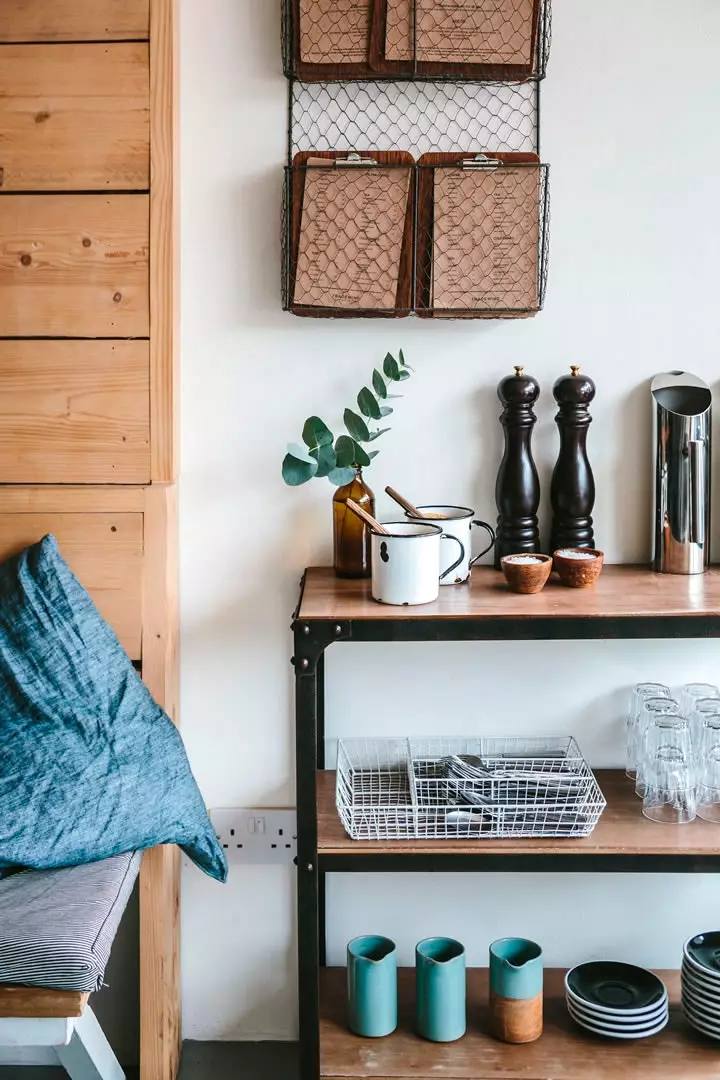
Tradewind Espresso, a specialty coffee that also has seasonal cuisine.
CONTEMPORARY
And, if Bristol's renovation has had its ups and downs, Whapping Wharf, in the southern part of the port, is the place that puts it on top, with a collection of containers known as Cargo, housing independent shops dedicated to cheeses, wines, rare English pies or even cider made from West Country apples.
Meanwhile, the key to the city's character lies in the cultural diversity of urban villages like Saint Paul's, historically an Afro-Caribbean enclave, and the gay-friendly Old Market. In the maze of paths behind Colston Hall, in the historic old town, is Leonard Lane, a dark alley lined with street art and urban curiosities.
For a true urban safari, head to the working-class neighborhood of Stoke's Croft, also known as the People's Republic of Stoke's Croft. Scruffy and anarchistic, it is crammed with vegan supermarkets, second-hand clothes and recycled furniture warehouses, like a copy of Berlin's Prenzlauer Berg. Among the murals and multicolored graffiti, look for Mild Mild West, the original Banksy mural in which a teddy bear throws a Molotov cocktail at the police.
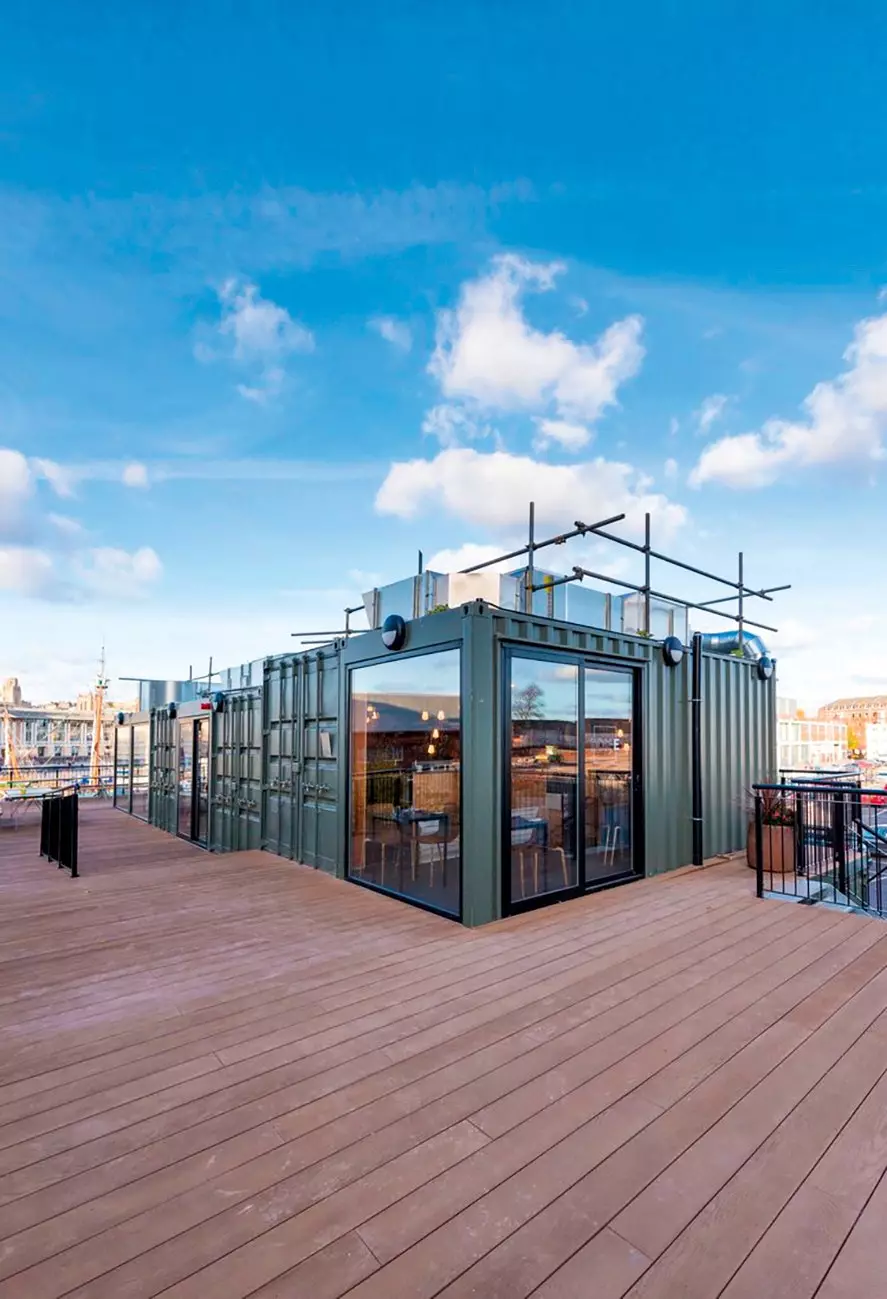
Two former shipping containers house Box-E, one of Whapping Wharf's hottest restaurants.
And when the fun of downtown wears you down, head to Clifton. Whom the most select neighborhood among all of Bristol, the air is clean and life is easy. The rows of honey-coloured stone mansions, its parks and gardens, its boutiques and bistros, all exude an air of wealthy comfort far removed from the atmosphere of Stoke's Croft.
Clifton deserves to walk and admire it, but there is one detail that cannot go unnoticed and that is its suspension bridge, considered the masterpiece of Isambard Brunel who, in fact, did not live to see it completed. The Clifton Suspension Bridge is to Bristol what the Eiffel Tower is to Paris. or the Golden Gate to San Francisco: a piece of engineering that has acquired an aura of romance.
As you gaze across the abyss from the lawn of Observatory Hill, think of Brunel's bridge as an elegant design solution, the posthumous work of a genius and a symbol of this unconventional, ingenious and big-hearted city for which he created it.
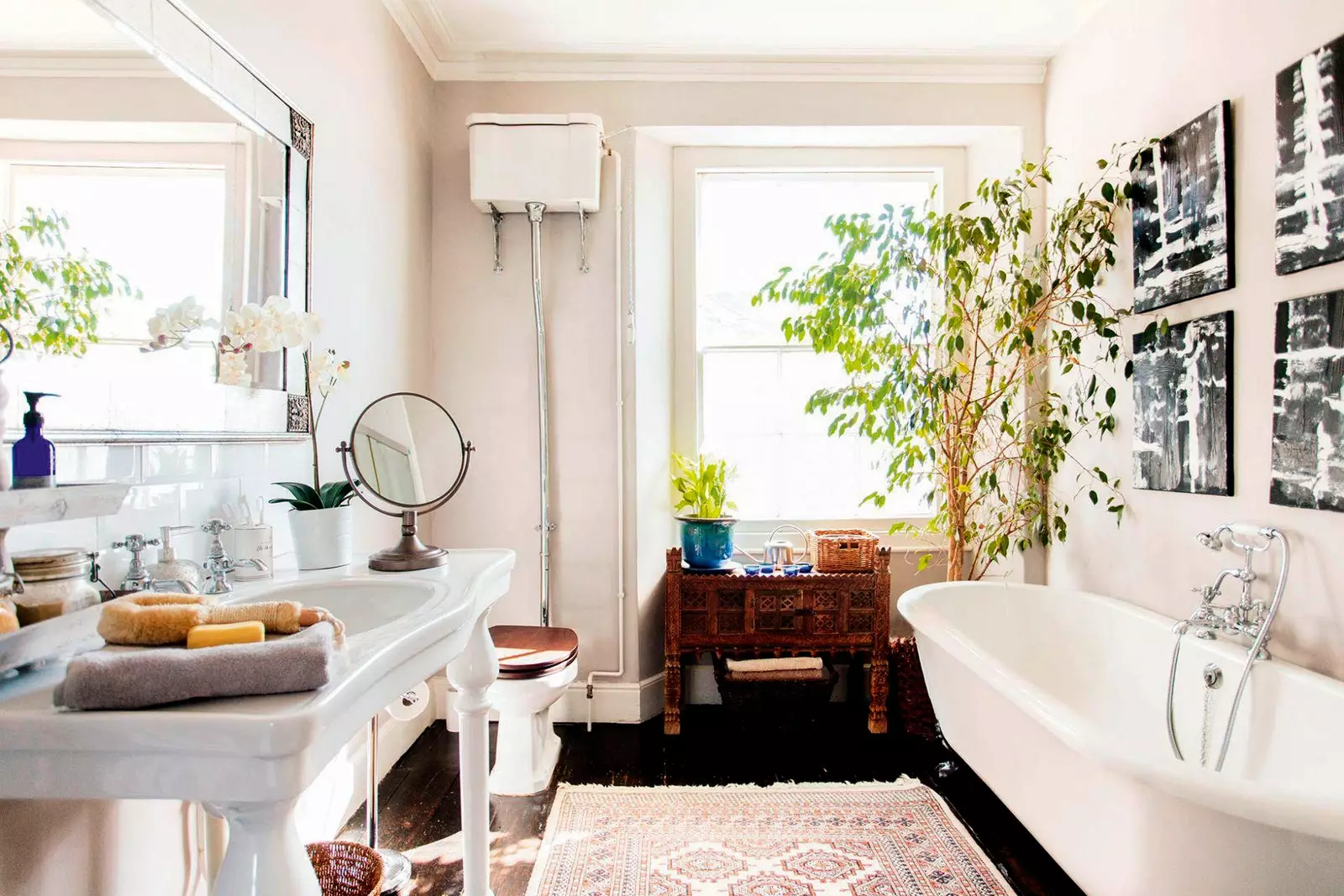
Room at Number 38 Clifton.
WHERE TO SLEEP IN BRISTOL
Visit Bristol: The official Bristol tourist office has a portfolio of recommendations that range from bed & breakfasts to boutique, eco or alternative hotels (campsites, hostels or university campuses).
Number 38 Clifton: Overlooking Clifton Downs and central Bristol, a Georgian-style boutique hotel with just 12 rooms. A haven of peace designed to make you feel like you have the house to yourself. Adults only (from €129).
Hotel Du Vin: Each of its 40 rooms is different and therefore unique. It has a special wine list and a praised gastronomic proposal focused on seasonal products (from €121).
Harbor Hotel: It occupies an old bank building, so its spa is located in the underground vaults (from €95).
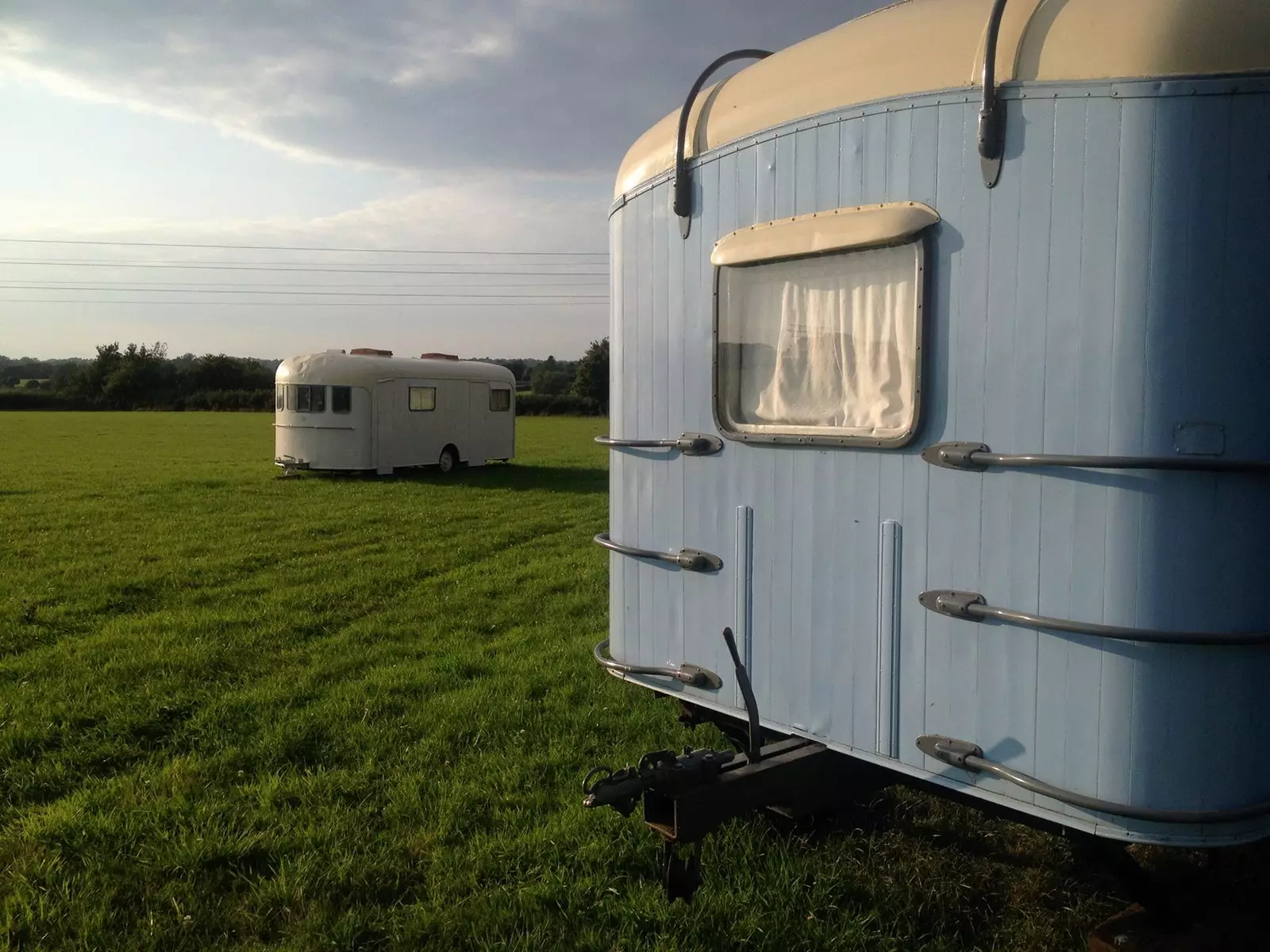
Vintage caravans at The Curious Cabinet, a different and artistic way of sleeping in Bristol.
DO WHERE TO EAT AND DRINK
Shop 3 Bistro: New Zealander Stephen Gilchrist delights diners with local produce like portulaca marina or wild garlic.
Chandos Road: Considered one of the gastronomic enclaves that is making the most noise in the current culinary scene of Bristol.
Lido Spa & Restaurant: One of Clifton's secret gems is Lido, with a secret pool and an Italian-Spanish restaurant.
Casamia: Owned by Sevillian Paco Sánchez, with a Michelin star and the reputation of the best restaurant in Bristol.
Hatchet Inn: Pub from 1606 where the pirate Edward Teach, aka Blackbeard, used to go.
Wokyko: Pan-Asian Fusion
The Athenian: Greek street cuisine specializing in souvlakis.
Box-E: Small restaurant with a modern menu. To take into account.
Music Venues: Bristol remains a committed live music city with a number of pubs and clubs including Lakota, The Fleece, The Exchange, Thunderbolt, Cosies and the unmistakable Thekla, a WWII fighting ship that is berthed at the quayside.
***** _This report was published in **number 124 of Condé Nast Traveler Magazine (January)**. Subscribe to the printed edition (11 printed issues and a digital version for €24.75, by calling 902 53 55 57 or from our website). The Condé Nast Traveler January issue is available in its digital version to enjoy on your preferred device. _
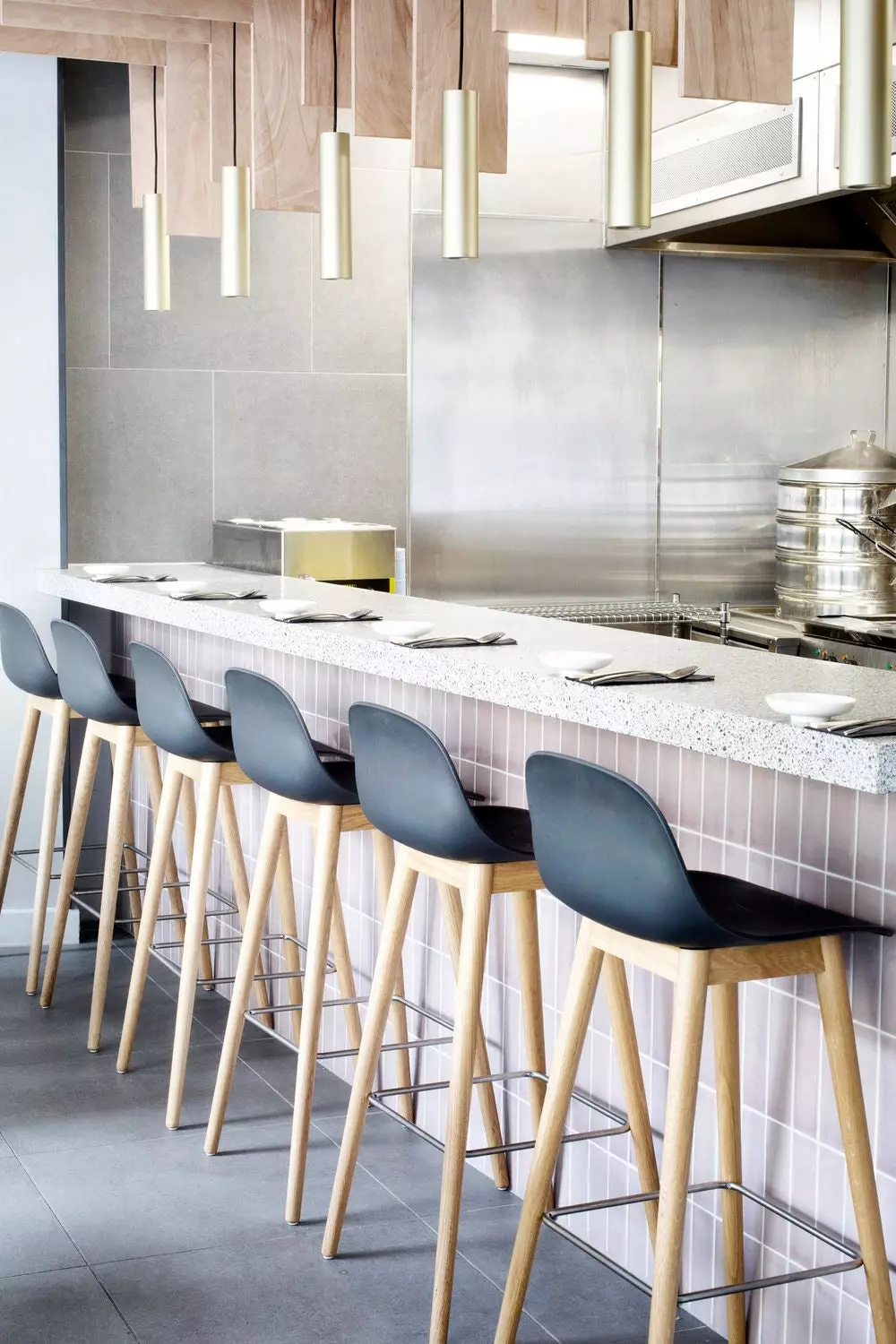
Woky Ko, one of the best examples of Asian cuisine.
